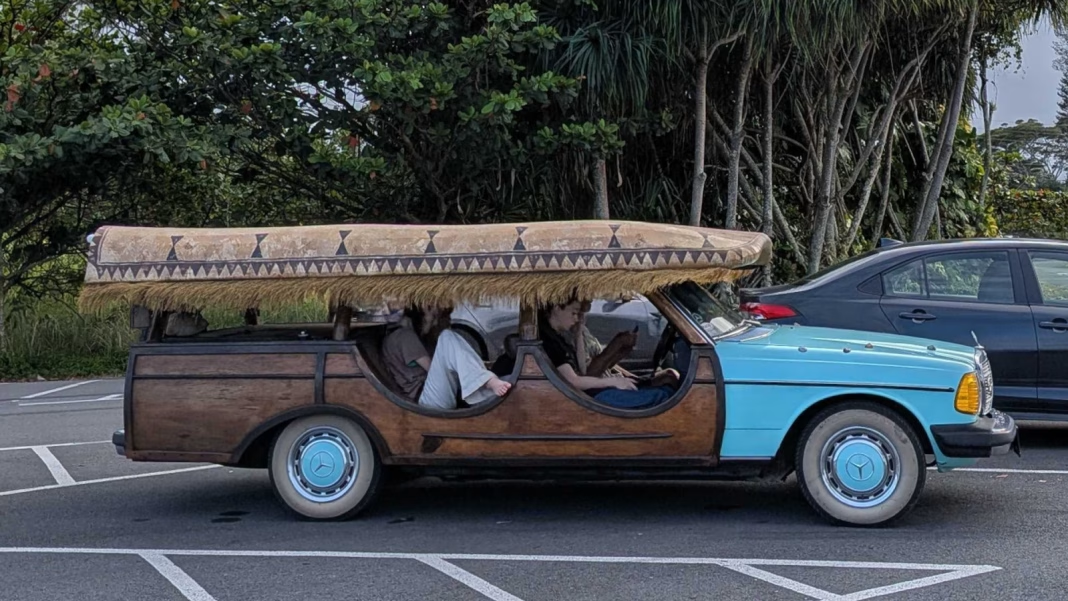What Makes Car Culture on Hawaii’s Big Island So Unique?
Ask anyone who’s spent time on Hawaii’s Big Island about the local car scene, and you’ll get a grin. This isn’t your typical mainland car culture. Here, the roads snake through volcanic landscapes, and the ocean is never far from view. The result? A blend of laid-back island vibes and a deep passion for all things automotive.
Locals have a knack for making the most of what’s available. Importing cars to the island is expensive, and shipping parts can take weeks. So, you’ll find plenty of creative DIY solutions—think hand-me-down trucks with custom paint jobs, or old-school Toyotas and Hondas kept alive with ingenuity and a dash of aloha spirit. It’s not about having the flashiest ride; it’s about keeping your wheels running and looking good while cruising Ali‘i Drive.
How Do Island Roads Shape the Way People Drive?
The Big Island’s roads are a character all their own. You’ve got winding mountain passes, rough lava fields, and stretches of highway that hug the coast. These conditions mean that lifted trucks and rugged SUVs are everywhere—locals call them “island beaters.” They’re not just for show; you need ground clearance to handle potholes and the occasional off-road adventure.
But it’s not all about utility. You’ll spot lowered imports and classic American muscle at weekend meet-ups, too. Drivers here have to balance style with practicality. That’s why you’ll see a vintage Datsun with surf racks or a lowered Civic with mud flaps. The island’s diverse terrain pushes everyone to get creative.
What’s the Community Vibe Like at Local Car Meets?
Car meets on the Big Island are more than just a chance to show off. They’re a social event—part barbecue, part family reunion, part car show. Everyone’s welcome, from teens with their first project car to uncles who’ve been wrenching for decades. It’s not unusual to see three generations gathered around a classic Chevy, swapping stories and advice.
Respect is a big deal. There’s a strong sense of kuleana (responsibility) to the community and the land. Burnouts and reckless driving aren’t just frowned upon—they’re likely to get you a talking-to from an auntie or uncle. Instead, people focus on craftsmanship and camaraderie. It’s about sharing knowledge, lending a hand, and keeping the scene positive.
How Do Imports and Local Customs Mix?
Hawaii’s car scene is a melting pot, just like its people. Japanese imports are hugely popular—think Toyota Hiluxes, Nissan Skylines, and kei trucks. But you’ll also find American classics, lifted Tacomas, and even the odd European ride. The island’s isolation means that trends sometimes lag behind the mainland, but that’s not a bad thing. It gives the scene a flavor all its own.
Local touches are everywhere. You might see a truck decked out in ti leaves for good luck, or a dashboard lined with kukui nut leis. License plate frames often shout out family names or local businesses. And don’t be surprised if someone offers you a plate lunch at a meet—it’s just how things are done.
What Challenges Do Car Enthusiasts Face on the Big Island?
Living on an island comes with its own set of hurdles for car lovers. Salt air and humidity are relentless, so rust is a constant battle. Parts can be hard to come by, and shipping costs add up fast. Many owners become experts at improvising—swapping parts between models, fabricating what they can, and keeping their rides running against the odds.
Insurance and registration can also be tricky, especially for imported or heavily modified vehicles. Local authorities keep a close eye on safety and emissions, so staying street-legal takes effort. But these challenges only make the victories sweeter. When you see a pristine classic rolling down the highway, you know it’s the result of real dedication.
How Does Island Life Influence Car Ownership?
On the Big Island, a car is more than just transportation—it’s a lifeline. Public transit is limited, and distances between towns can be long. For many families, the family truck is the backbone of daily life, hauling everything from surfboards to groceries to construction gear.
But cars are also a source of pride and identity. They reflect the owner’s personality, heritage, and resourcefulness. It’s not unusual for a single vehicle to be passed down through generations, each owner adding their own touches. In this way, cars become part of the family story.
The Big Takeaway
Hawaii’s Big Island car culture isn’t about perfection—it’s about smarter adjustments. Whether you’re cruising in a lifted Tacoma or wrenching on a vintage Corolla, it’s the spirit of community, creativity, and resilience that keeps the scene alive. Start with one change this week—maybe it’s fixing up your ride or joining a local meet—and you’ll likely spot the difference by month’s end.


